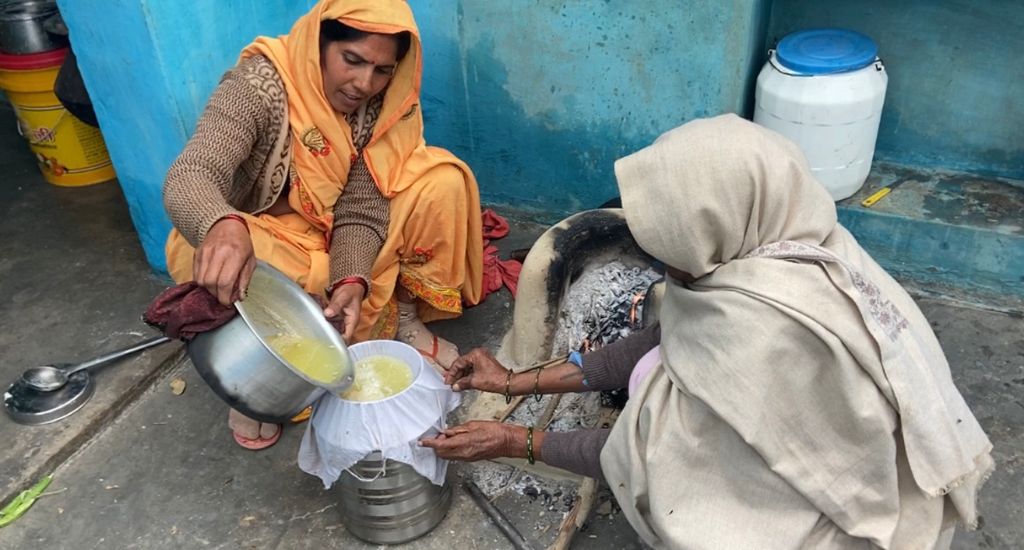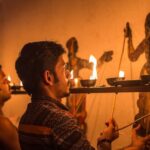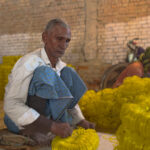Tucked away in the rugged terrain of Chambal, once notorious for its lawless dacoits, lies the village of Kamai in Bhind district of Madhya Pradesh. At first glance, Kamai seems like any other small, rural settlement, but there’s something unusual about this village. Here, milk is sacred, and not for sale.
In a country where milk is widely sold and traded, this village holds firm to a tradition that spans generations. The belief that selling milk would bring death to the cattle that produce it. This deep-rooted conviction has shaped the lives of the nearly 1,100 residents, who have long adhered to a rule passed down from their ancestors – milk is sacred, never to be commodified.

The story of this tradition begins at the heart of the village, where the shrine of Shri Harsukh Baba stands as both a religious site and the spiritual centre of Kamai.
“Whenever a new cow or buffalo is brought to the village and starts giving milk, the first offering is always made at the shrine of Shri Harsukh Baba,” a villager said. This ritual ensures the well-being of their livestock and reinforces their bond with their land and each other.
The shrine is a place where faith and tradition converge, uniting not just the 200 households but also visitors from surrounding villages. Each year, a grand feast or “bhandara” is held at the shrine, drawing thousands. Villagers offer generous amounts of milk, curd, and butter to the feast.
It’s an event that reflects the village’s unique values. Everything, from the savoury vegetables to sweet kheer and malpua, is prepared with ghee or clarified butter. Vegetable oils have no place in this sacred meal, where tradition governs both spirit and sustenance.
Defied a dark past
Kamai’s story is also a tale of survival and transformation. Decades ago, this quiet village was anything but peaceful. Kamai’s remote location, surrounded by deep ravines created by the Chambal river, made it an ideal hideout for dacoits who ruled the region with fear.
These outlaws often descended upon the village, stealing whatever they could, including the precious milk that sustained the villagers. For years, Kamai lived under the shadow of crime, its people caught in a cycle of violence and despair.
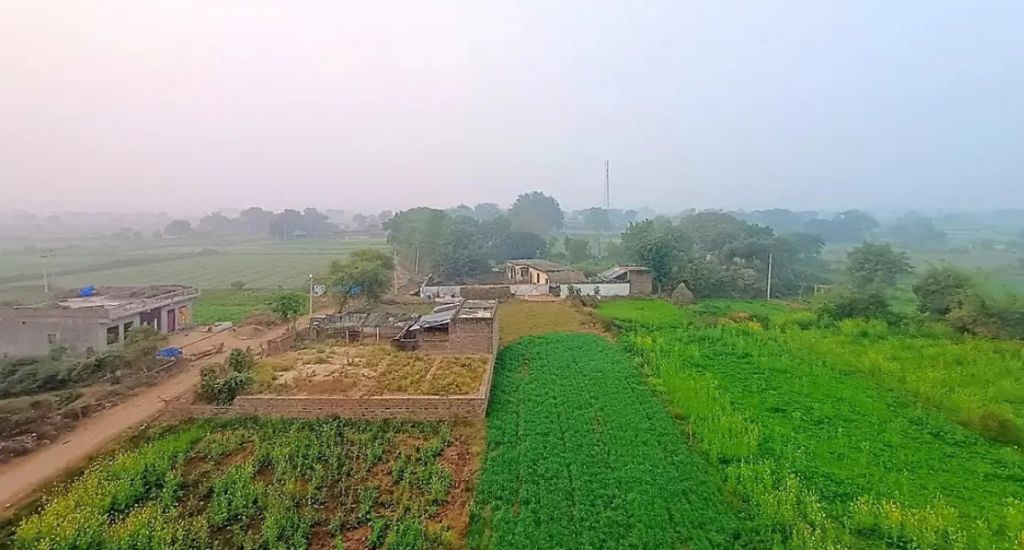
Change came slowly and from within. Tired of living in fear, the villagers turned to the one source of strength they could rely on – their faith. The shrine of Shri Harsukh Baba became a rallying point for the community, a place where they sought protection and guidance.
Remarkably, even some of the dacoits, touched by the villagers’ unwavering devotion and the teachings of Harsukh Baba, began to turn away from leading lives of crime. It was a turning point for Kamai, as the village shifted its focus to a new way of life – dairy farming.
Kamai’s milk of faith
Dairy farming became not just a means of survival, but a way to rebuild a community broken by fear. Milk, once stolen by bandits, now flowed freely in the village, bringing both nourishment and unity.
Yet, the villagers held firm to their ancestors’ teachings. Milk was never to be sold. If anyone in Kamai needed money, they would sell dairy products — ghee, paneer, or mawa – but the milk itself was too sacred to be traded for profit.
“People think we are poor, but this is our way,” says village elder Ramprakash Rathore. “Our ancestors taught us that milk is a divine gift, not something to be commercialised.”
Each household consumes what milk it needs, and the rest is made into ghee, which the villagers say has made them stronger and healthier. “We consider ourselves descendants of Lord Krishna, who was fond of milk and its products,” adds resident Prashant Yadav. “This is our way of life, to keep our bodies and minds healthy.”
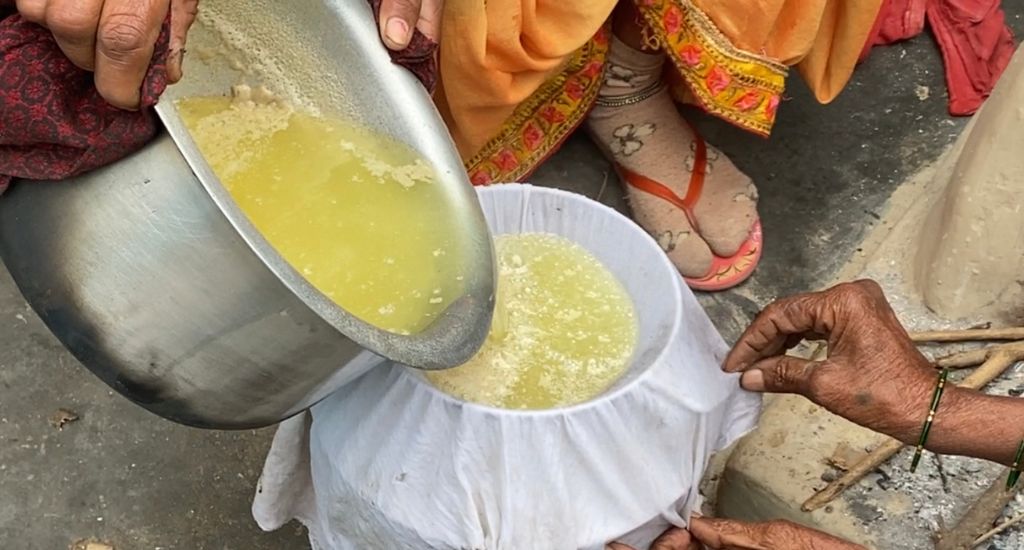
To this day, the villagers firmly believe that selling milk would lead to the cows falling ill or even dying. There are whispered stories of those who tried to secretly sell milk, only to find their cows mysteriously stop producing.
The fame of Kamai’s wholesome ghee has spread beyond the village’s borders, attracting buyers from nearby towns and cities.
Kamai’s story, like the milk they hold sacred, flows through the village’s veins, binding the people together in a shared faith that has withstood the test of time.
The lead photo shows women in Kamai village, where each household consumes the milk it needs, while the rest is made into ghee. (Photo by Akansha Deshmukh)
Akansha Deshmukh is an independent investigative journalist who operates mainly in central India.

